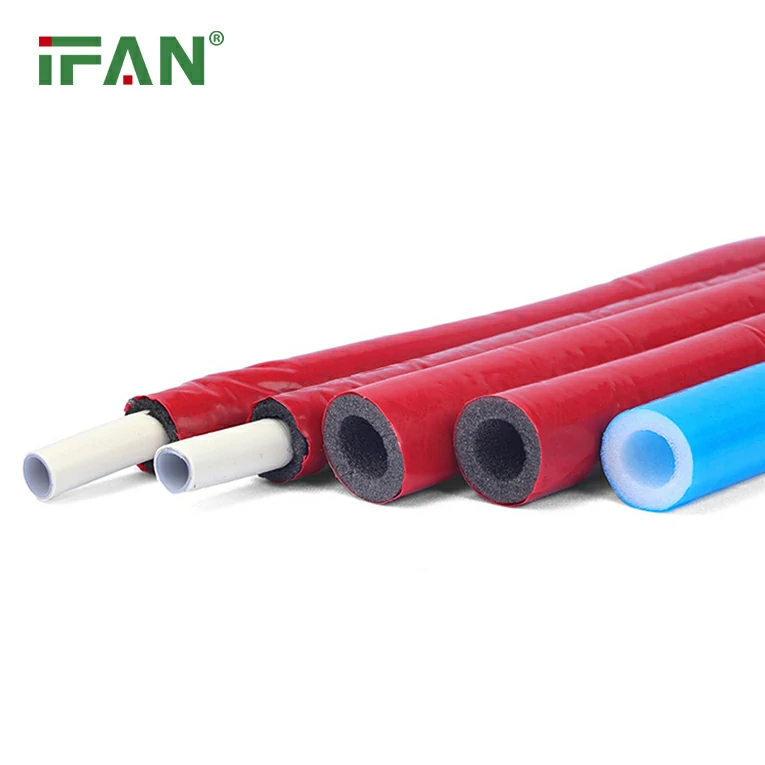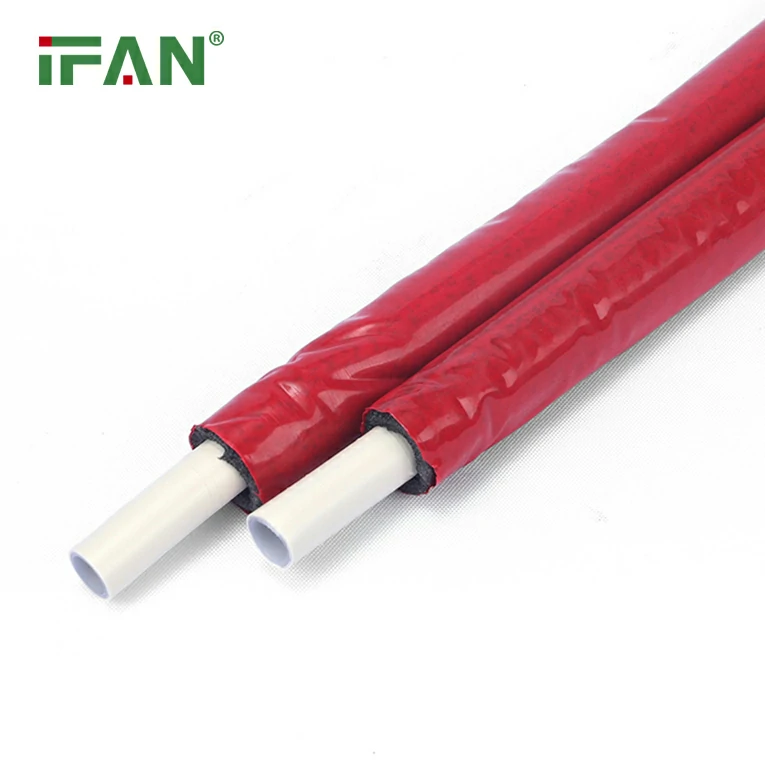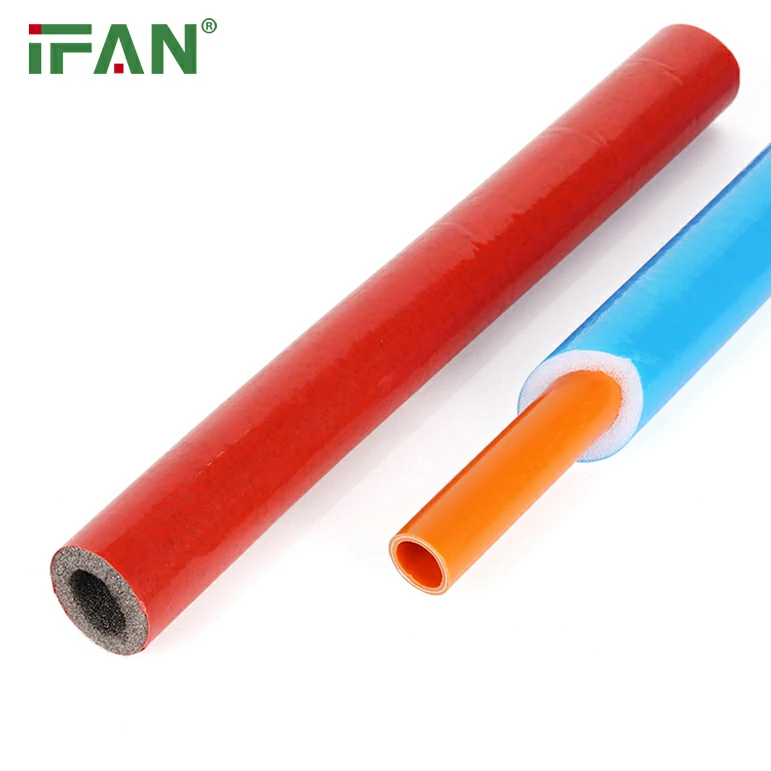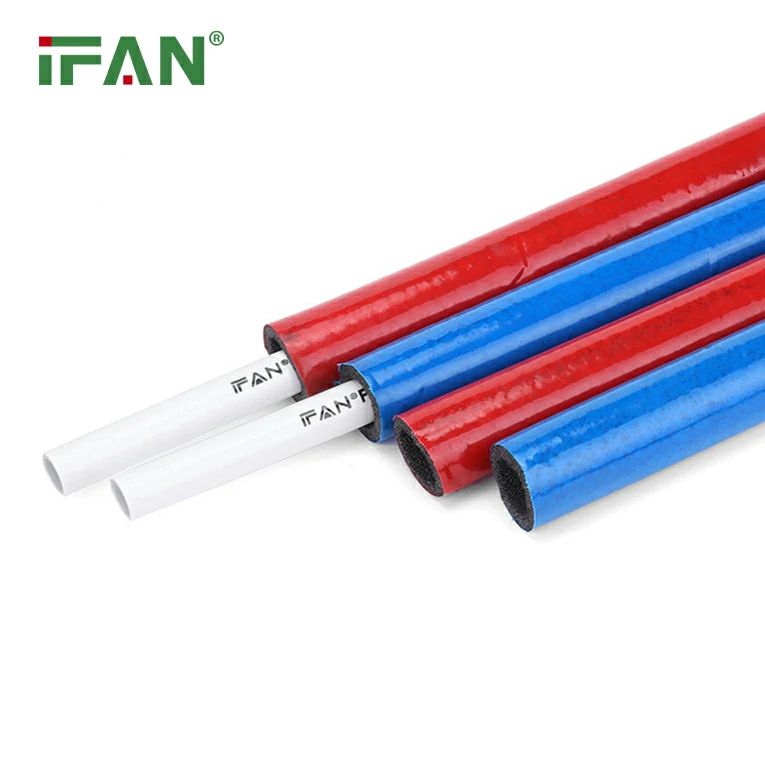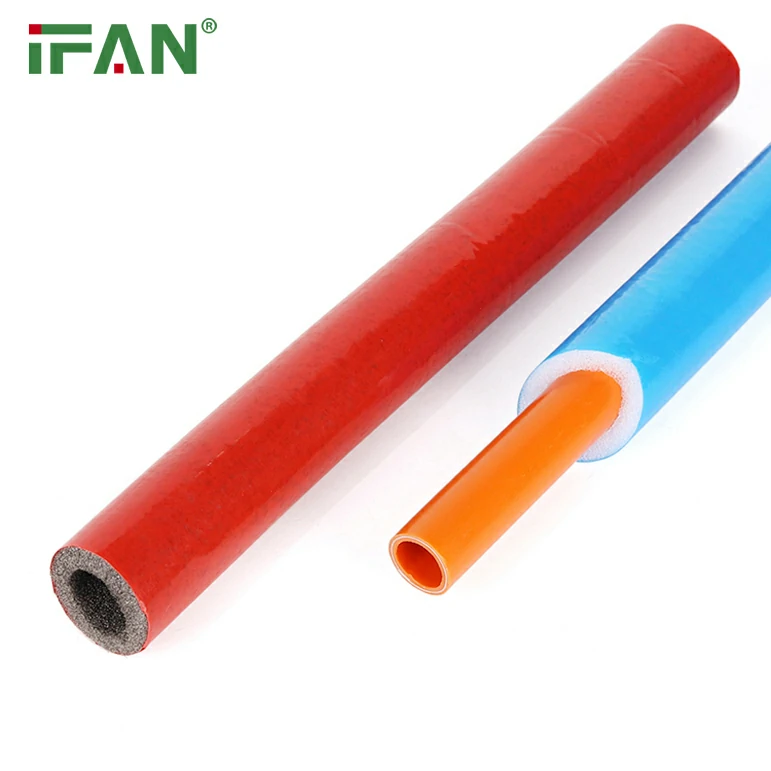PEX press fittings have become a staple in modern plumbing systems, offering a secure, reliable, and efficient way to connect PEX pipes without the need for soldering or glue. One of the most essential components of a successful PEX installation is the stainless-steel clamp, which plays a crucial role in ensuring a leak-free connection. Together, PEX press fittings and stainless-steel clamps offer a versatile and durable solution for both residential and commercial plumbing.
In this comprehensive guide, we will explore the connection process between PEX press fittings and stainless-steel clamps, the benefits of using these components, installation best practices, and troubleshooting tips. Whether you’re a seasoned plumber or a DIY enthusiast, understanding how to properly connect these elements will help ensure a long-lasting, leak-free plumbing system.

What Are PEX Press Fittings?
PEX press fittings are specially designed components used to connect PEX piping to other PEX pipes or plumbing fixtures. They are typically made from materials like brass, copper, or stainless steel and are designed to be securely compressed onto PEX pipe using a press tool. This compression creates a tight, leak-proof seal without the need for heat, soldering, or glue, making the installation process faster and more efficient.
The key advantages of PEX press fittings include:
- No Soldering or Heat Required: Unlike traditional copper piping, which requires soldering, PEX press fittings eliminate the need for an open flame or high heat, which increases both safety and speed.
- Quick and Easy Installation: PEX press fittings offer a quick and easy connection process, reducing installation time significantly.
- Durable and Leak-Proof: When installed correctly, PEX press fittings provide a long-lasting, secure connection that prevents leaks and ensures the integrity of the plumbing system.
- Corrosion-Resistant: Many PEX press fittings are made from corrosion-resistant materials like brass or stainless steel, which can withstand harsh conditions and water fluctuations.
The Role of Stainless-Steel Clamps in PEX Press Fittings
Stainless-steel clamps are used in conjunction with PEX press fittings to ensure a secure connection. These clamps are typically used with crimp fittings and expansion fittings, but they also play a critical role when used with PEX press fittings. Stainless steel is chosen for its strength, durability, and resistance to corrosion, making it the ideal material for securing PEX fittings in a variety of environments.
The stainless-steel clamp works by securing the PEX pipe around the PEX press fitting, preventing any movement or slippage and ensuring a leak-proof seal. Stainless-steel clamps come in various sizes to accommodate different PEX pipe diameters, and they are typically tightened using a crimping tool or clamp tool.
Key Features of Stainless-Steel Clamps:
- Durability: Stainless steel is resistant to rust, corrosion, and other forms of wear and tear, ensuring that the clamp will last for many years.
- Strength: Stainless-steel clamps are designed to provide strong, consistent pressure around the PEX pipe, ensuring that the connection remains secure under pressure.
- Compatibility: These clamps are compatible with most PEX fittings, including press fittings, crimp fittings, and push-fit fittings, making them a versatile choice for many plumbing applications.
- Corrosion Resistance: Stainless steel clamps are particularly effective in environments where exposure to moisture and corrosive substances is high, such as in plumbing systems for water supply and heating.
Benefits of Using PEX Press Fittings with Stainless-Steel Clamps
When PEX press fittings are combined with stainless-steel clamps, you achieve a secure, reliable, and durable connection. Here are the key benefits of using these two components together:
1. Leak-Free Connections
One of the most significant benefits of using PEX press fittings and stainless-steel clamps is the ability to create leak-free connections. The press fitting ensures a tight seal on the PEX pipe, while the stainless-steel clamp holds the fitting firmly in place. This combination creates a robust and reliable connection that reduces the risk of leaks over time.
2. Durability and Longevity
Both PEX press fittings and stainless-steel clamps are designed to withstand the rigors of plumbing systems, including fluctuating temperatures, high water pressure, and exposure to moisture. The corrosion-resistant properties of stainless steel and the strong, durable nature of PEX fittings ensure that the connection will last for many years without degradation.
3. Fast and Easy Installation
Using PEX press fittings combined with stainless-steel clamps significantly speeds up the installation process compared to traditional methods. There’s no need for soldering or waiting for glue to set. Once the pipe and fitting are aligned, simply press the fitting into place and tighten the clamp. This fast installation reduces labor costs and minimizes disruption during construction or renovation.
4. Reduced Risk of Leaks Over Time
Unlike traditional methods, which can sometimes result in loose or improperly sealed connections, PEX press fittings with stainless-steel clamps are designed to ensure a strong, consistent seal that won’t loosen or deteriorate over time. This significantly reduces the chances of leaks developing in your plumbing system.
5. Versatility
PEX press fittings and stainless-steel clamps are incredibly versatile, allowing you to use them in a wide range of plumbing applications, including water supply systems, radiant heating systems, and hydronic heating systems. They are compatible with various PEX pipe sizes and can be used for both residential and commercial plumbing installations.
How to Connect PEX Press Fittings with Stainless-Steel Clamps
Proper installation of PEX press fittings with stainless-steel clamps is essential for ensuring a leak-free and durable plumbing system. Below is a step-by-step guide on how to correctly connect these components:
Step 1: Prepare the PEX Pipe
Begin by cutting the PEX pipe to the required length using a PEX pipe cutter. Make sure the cut is clean and straight. If there are any rough edges or burrs, use a deburring tool to smooth them out, as these can affect the quality of the connection.
Step 2: Insert the PEX Fitting
Next, slide the PEX press fitting into the end of the pipe. Ensure that the pipe is fully inserted into the fitting, reaching the stop mark inside the fitting. This will ensure a secure, leak-proof connection.
Step 3: Position the Stainless-Steel Clamp
Once the fitting is properly inserted into the pipe, place the stainless-steel clamp over the connection. The clamp should be positioned just beyond the press fitting, covering the part of the pipe where the fitting and pipe meet. Ensure that the clamp is centered around the fitting to ensure uniform pressure when tightened.
Step 4: Tighten the Clamp
Using a clamp tool or crimping tool, tighten the stainless-steel clamp securely around the pipe and fitting. Make sure that the clamp is tightened evenly, as this will ensure a uniform seal and prevent any movement between the pipe and fitting. Be careful not to over-tighten the clamp, as this could damage the pipe or fitting.
Step 5: Press the Fitting
After the clamp is securely in place, use a PEX press tool to press the PEX press fitting. Align the press tool with the crimping area of the fitting and apply consistent pressure until the tool locks in place. The tool will apply sufficient pressure to create a tight, leak-proof seal between the fitting and the pipe.
Step 6: Inspect the Connection
After pressing the fitting, visually inspect the connection to ensure it is properly secured. There should be no gaps between the clamp and the fitting, and the press fitting should be firmly compressed onto the pipe. Check for any signs of misalignment or incomplete crimping.
Step 7: Test the System
Once all the fittings are connected, it is essential to test the system for any leaks. Turn on the water supply and check all connections for signs of leakage. If you find any leaks, you may need to re-tighten the clamp or press the fitting again to ensure a secure connection.
Troubleshooting Common Issues
Even with high-quality tools and components, plumbing installations can occasionally run into issues. Here are a few common problems that may arise when connecting PEX press fittings and stainless-steel clamps, along with tips on how to address them:
1. Leaks at the Connection
If you detect a leak at the connection, ensure that the PEX pipe is fully inserted into the fitting and that the stainless-steel clamp is tightened correctly. Double-check the fitting to ensure it was properly pressed with the tool. If necessary, reapply pressure using the press tool.
2. Incorrect Clamp Size
Using the wrong size stainless-steel clamp can result in an improper seal. Make sure that the clamp is the correct size for both the PEX pipe and the press fitting. A clamp that’s too tight can damage the pipe, while a clamp that’s too loose will not secure the connection properly.
3. Damaged Pipe or Fitting
If the PEX pipe or press fitting is damaged, the connection may not hold. Inspect both the pipe and fitting for any cracks or deformities before installation. If either component is damaged,
replace it before proceeding.
Conclusion
Connecting PEX press fittings with stainless-steel clamps offers a fast, reliable, and durable solution for creating leak-proof plumbing systems. With proper tools, techniques, and attention to detail, you can ensure that your connections are secure and long-lasting, minimizing the risk of future leaks or failures.
By understanding the key benefits of these components and following the correct installation process, you can enjoy the many advantages of a PEX press fitting system, from speed and efficiency to safety and durability.
Frequently Asked Questions (FAQs)
- What are PEX press fittings and stainless-steel clamps used for? PEX press fittings are used to connect PEX pipes to fixtures or other pipes, while stainless-steel clamps are used to secure these fittings in place, ensuring a leak-free connection.
- Can I use stainless-steel clamps with any PEX fittings? Yes, stainless-steel clamps are compatible with various types of PEX fittings, including press fittings, crimp fittings, and expansion fittings.
- Do I need special tools to install PEX press fittings with stainless-steel clamps? Yes, you will need a PEX press tool to compress the PEX press fitting and a clamp tool to tighten the stainless-steel clamp securely.
- How do I ensure a leak-free connection with PEX press fittings and stainless-steel clamps? Ensure that the PEX pipe is fully inserted into the fitting, the stainless-steel clamp is properly positioned, and the PEX press fitting is securely compressed with the press tool.
- Can stainless-steel clamps be reused? It is generally recommended to replace stainless-steel clamps after installation to ensure a secure, long-lasting seal. Reusing clamps can compromise the integrity of the connection.

